MOE 系列模型小记
在本文中,我们梳理了近期 (24 年 7 月前)部分 MOE 大模型的关键信息,包括它们的主要特点、亮点以及相关资源链接。涉及模型 Mixtral 8x7B,Mixtral 8x22B,DeepSeek-MoE,Qwen1.5-MoE,DeepSeek-V2
混合专家模型的 Transformer 模型
对于 MOE 的基础,相比 dense model,MOE 的预训练速度更快,推理速度更快,但需要大量的显存。此外,MOE 的训练也有一些独有的 tips,详细的 MOE 混合专家模型基础,推荐参考:
对于一些经典的 MOE 架构模型,可以参考:Mixture-of-Experts (MoE) 经典论文一览
Mixtral 8*7B
相关资源:论文,huggingface 模型权重, 官方博客,huggingface 模型代码,混合专家模型基础(推荐),官方给出的评分来看,mixtral 8*7 和 GPT3.5 有的一比。
发布时间: 23 年 12 月
模型大小 :8 个 expert MLP 层,一共 45B 大小。
训练: 除了预训练外,Mixtral MOE 后续还开源了一个经过 SFT + DPO 微调的版本。
模型效果:
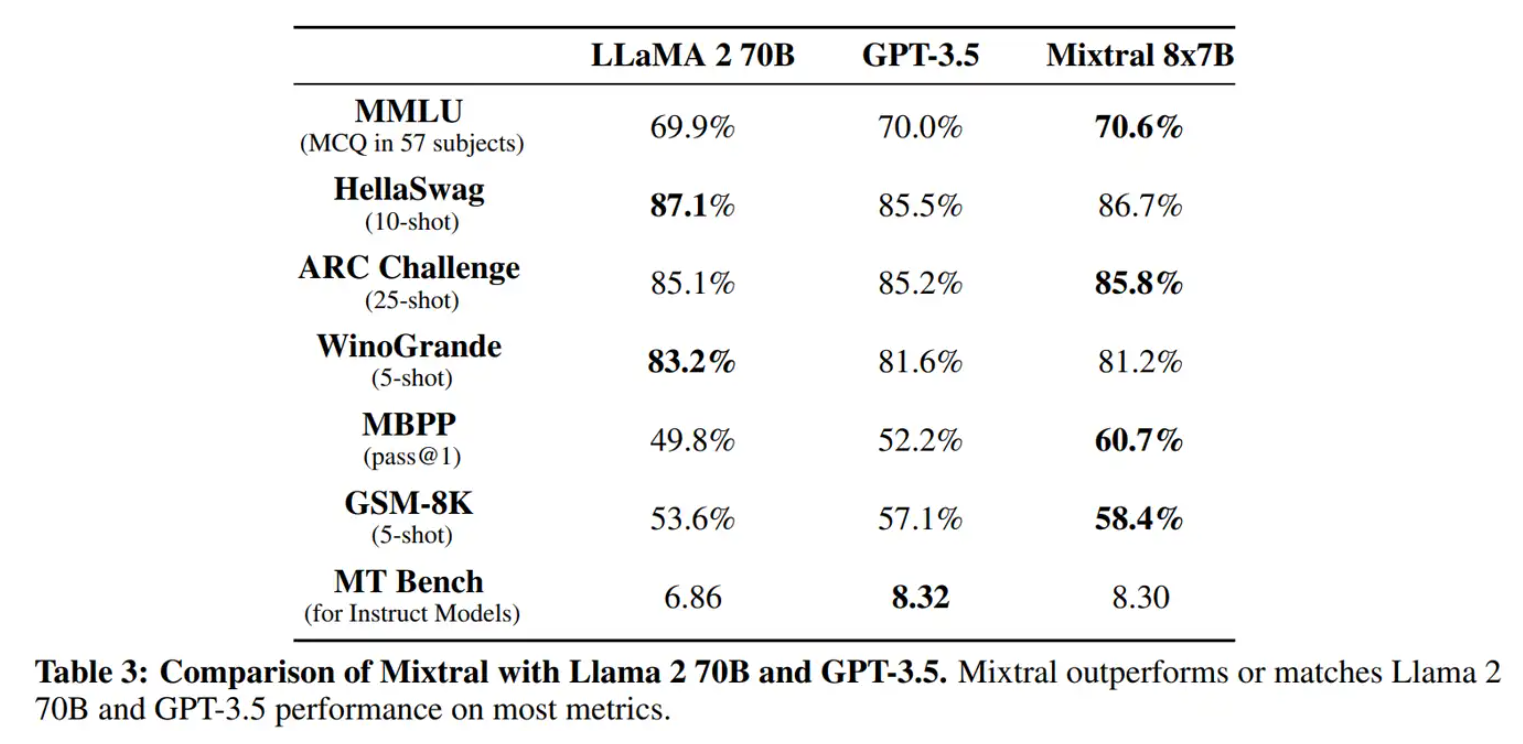
- 架构: Mixtral 的 MOE 架构类似于,在 MoE 模型中,只有 FFN 层被视为独立的专家,而模型的其他参数是共享的。大致参数为:
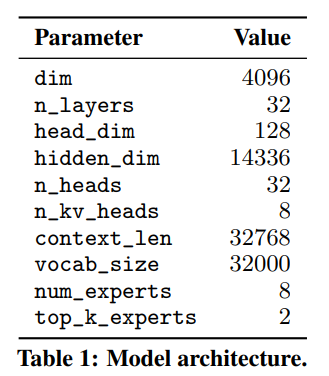
对 moe 架构不太了解的朋友,可以参考这篇博客 混合专家模型基础(推荐)。
参考 huggingface 中的 mixtral 和 mistral 实现对比,差异在于 mixtral 中将传统 transformer decoder layer 中的 FFN 替换为了 block_sparse_moe。
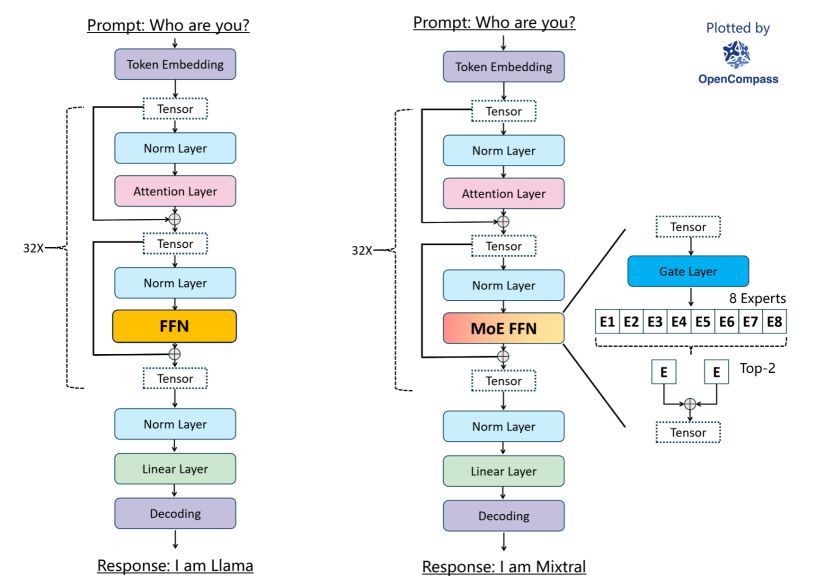
主要逻辑为:
其中 为专家对应的网络,具体展示为下面 huggingface 实现中的 MixtralBlockSparseTop2MLP。mixtral 中采用了 8 个 expert,每次推理使用选取 top 2 的 expert 进行推理。比如输入一句话 你好,今天,那么我们每个 token 都会选出 top 2 的 expert 来负责这个 token 的预测,因此在推理 你好,今天 时, 有概率所有 expert 都会参与到计算当中 ,具体可以参考 MixtralSparseMoeBlock 的实现。
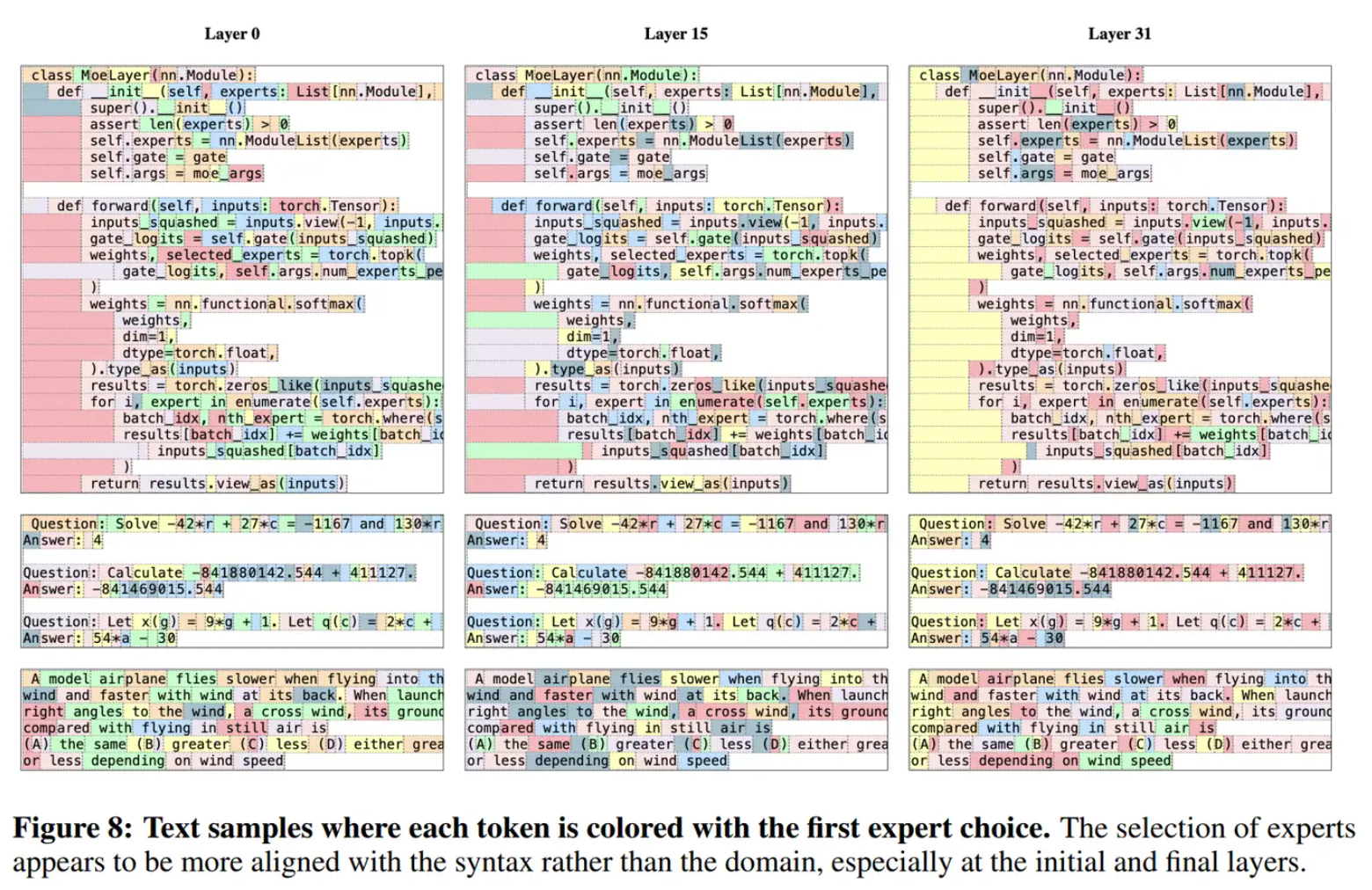
mixtral 论文中提到专家分配在不同主题(如 ArXiv 论文、生物学和哲学文档)中没有明显的模式,只有在 DM 数学中显示出边际上的差异,这可能是由于其数据集的合成性质和有限的自然语言覆盖范围所致。router 在某些句法结构上表现出一定的结构化行为(比如 python 的 self 等),同时连续标记通常被分配给相同的专家。
- huggingface 中的 mixtral 核心代码:
class MixtralDecoderLayer(nn.Module):
def __init__(self, config: MixtralConfig, layer_idx: int):
super().__init__()
self.hidden_size = config.hidden_size
self.self_attn = MIXTRAL_ATTENTION_CLASSES[config._attn_implementation](config, layer_idx)
self.block_sparse_moe = MixtralSparseMoeBlock(config)
self.input_layernorm = MixtralRMSNorm(config.hidden_size, eps=config.rms_norm_eps)
self.post_attention_layernorm = MixtralRMSNorm(config.hidden_size, eps=config.rms_norm_eps)
def forward(
hidden_states: torch.Tensor,
attention_mask: Optional[torch.Tensor] = None,
# 此处省略参数 ..
) -> Tuple[torch.FloatTensor, Optional[Tuple[torch.FloatTensor, torch.FloatTensor]]]:
residual = hidden_states
hidden_states = self.input_layernorm(hidden_states)
hidden_states, self_attn_weights, present_key_value = self.self_attn(
# 此处省略参数
)
hidden_states = residual + hidden_states
residual = hidden_states
hidden_states = self.post_attention_layernorm(hidden_states)
# Mixtral 将原本的 hidden_states = self.FFN(hidden_states) 替换为了:
hidden_states, router_logits = self.block_sparse_moe(hidden_states)
hidden_states = residual + hidden_states
outputs = (hidden_states,)
return outputs
huggingface 中 block_sparse_moe 的实现(省略部分次要代码):
class MixtralSparseMoeBlock(nn.Module):
def __init__(self, config):
super().__init__()
self.hidden_dim = config.hidden_size
self.ffn_dim = config.intermediate_size
self.num_experts = config.num_local_experts
self.top_k = config.num_experts_per_tok
self.gate = nn.Linear(self.hidden_dim, self.num_experts, bias=False)
self.experts = nn.ModuleList([MixtralBlockSparseTop2MLP(config) for _ in range(self.num_experts)])
self.jitter_noise = config.router_jitter_noise
def forward(self, hidden_states: torch.Tensor) -> torch.Tensor:
batch_size, sequence_length, hidden_dim = hidden_states.shape
hidden_states = hidden_states.view(-1, hidden_dim)
router_logits = self.gate(hidden_states) # (batch * sequence_length, n_experts)
routing_weights = F.softmax(router_logits, dim=1, dtype=torch.float)
routing_weights, selected_experts = torch.topk(routing_weights, self.top_k, dim=-1)
routing_weights /= routing_weights.sum(dim=-1, keepdim=True)
# we cast back to the input dtype
routing_weights = routing_weights.to(hidden_states.dtype)
final_hidden_states = torch.zeros(
(batch_size * sequence_length, hidden_dim), dtype=hidden_states.dtype, device=hidden_states.device
)
# One hot encode the selected experts to create an expert mask
# this will be used to easily index which expert is going to be sollicitated
expert_mask = torch.nn.functional.one_hot(selected_experts, num_classes=self.num_experts).permute(2, 1, 0)
# Loop over all available experts in the model and perform the computation on each expert
for expert_idx in range(self.num_experts):
expert_layer = self.experts[expert_idx]
idx, top_x = torch.where(expert_mask[expert_idx])
# Index the correct hidden states and compute the expert hidden state for
# the current expert. We need to make sure to multiply the output hidden
# states by `routing_weights` on the corresponding tokens (top-1 and top-2)
current_state = hidden_states[None, top_x].reshape(-1, hidden_dim)
# current_state: shape (n_i, hidden_dim)
# 所有 current_state 的长度 n 总和为 batch * sequence_length
current_hidden_states = expert_layer(current_state) * routing_weights[top_x, idx, None]
# However `index_add_` only support torch tensors for indexing so we'll use
# the `top_x` tensor here.
final_hidden_states.index_add_(0, top_x, current_hidden_states.to(hidden_states.dtype))
final_hidden_states = final_hidden_states.reshape(batch_size, sequence_length, hidden_dim)
return final_hidden_states, router_logits
其中: MixtralBlockSparseTop2MLP 长这样:
class MixtralBlockSparseTop2MLP(nn.Module):
def __init__(self, config: MixtralConfig):
super().__init__()
self.ffn_dim = config.intermediate_size
self.hidden_dim = config.hidden_size
self.w1 = nn.Linear(self.hidden_dim, self.ffn_dim, bias=False)
self.w2 = nn.Linear(self.ffn_dim, self.hidden_dim, bias=False)
self.w3 = nn.Linear(self.hidden_dim, self.ffn_dim, bias=False)
self.act_fn = ACT2FN[config.hidden_act]
def forward(self, hidden_states):
current_hidden_states = self.act_fn(self.w1(hidden_states)) * self.w3(hidden_states)
current_hidden_states = self.w2(current_hidden_states)
return current_hidden_states
根据模型参数量 45B 来推理的话,如果用 fp16 的话推理的话,得需要至少 90GB 以上的显存,如果用 4 bit 的话,30GB 显存就够了。量化的生成速度,可以参考这个 redis 中的评论,大致为 :
| 推理精度 | 设备 | 速度 tokens/s |
|---|---|---|
| Q4_K_M | 单卡 4090 + 7950X3D | 20 |
| Q4_K_M | 2 x 3090 | 48.26 |
如果有 100+GB 以上显存,可以用 vllm 快速搭建测试 api:
docker run --gpus all \
-e HF_TOKEN=$HF_TOKEN -p 8000:8000 \
ghcr.io/mistralai/mistral-src/vllm:latest \
--host 0.0.0.0 \
--model mistralai/Mixtral-8x7B-Instruct-v0.1 \
--tensor-parallel-size 2 # 100+GB 显存 \
--load-format pt # needed since both `pt` and `safetensors` are available
NVIDIA 的 TensorRT-LLM 博客中发出了对 Mixtral 8*7B 的吞吐量 benchmark (using input and output sequence lengths of 128):
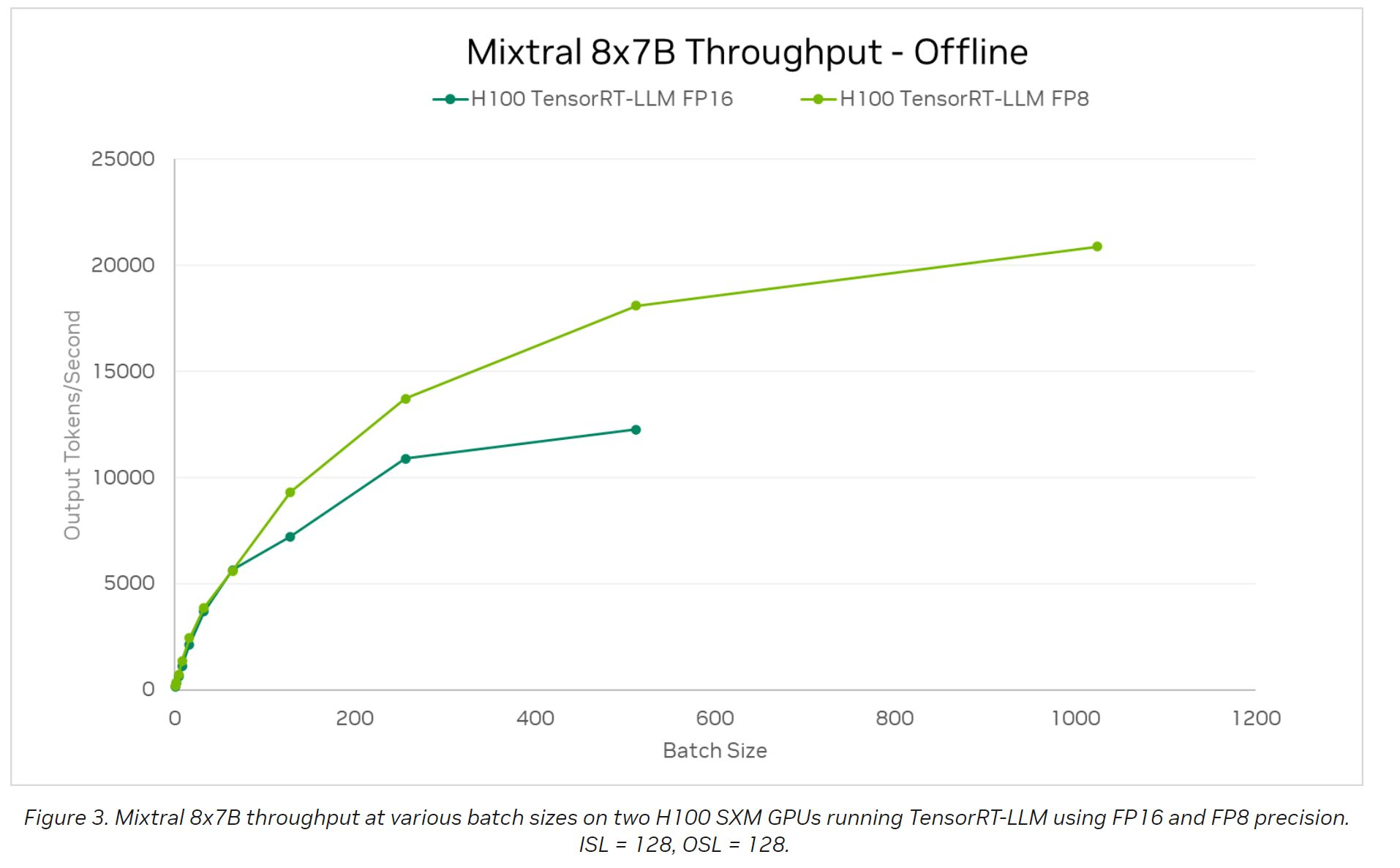
文中没有给出当 sequence lengths 最大时候的吞吐量,但根据上图数据,可以猜测 2 个 H100 部署 8*7B 正常服务用户时,平均吞吐量应该可以大于 7500Tokens/秒,根据 H100 的功耗计算电费成本的话,生成 1M token 需要耗约为 0.02 度电。
DeepSeek-MoE
相关资源:github, 论文 DeepSeekMoE: Towards Ultimate Expert Specialization in Mixture-of-Experts Language Models
- 训练: 整个模型在 2T 的中英文预料上训练,实现了和 DeekSeek 7B 及 LlaMA 2 7B 差不都的效果。
- 模型效果: DeepSeekMoE 16B 推理时候,只用到了 2.8B 的参数,整体的 FLOPs 是 LlaMA 2 7B 的 39.6%;推理速度更快的同时,效果也不差。
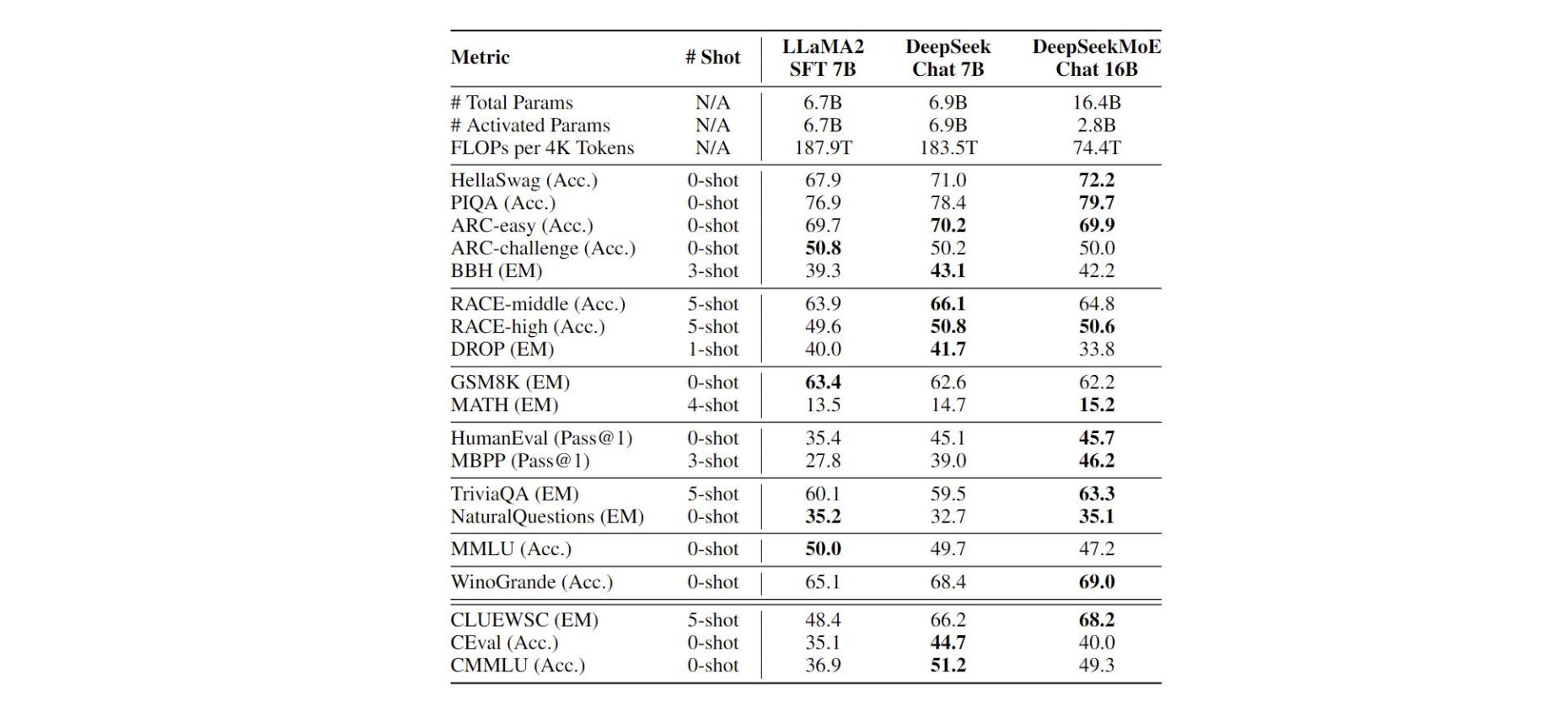
- 架构: DeepSeekMoE 16B 主要亮点在于 fine-grained expert segmentation 和 shared experts isolation.
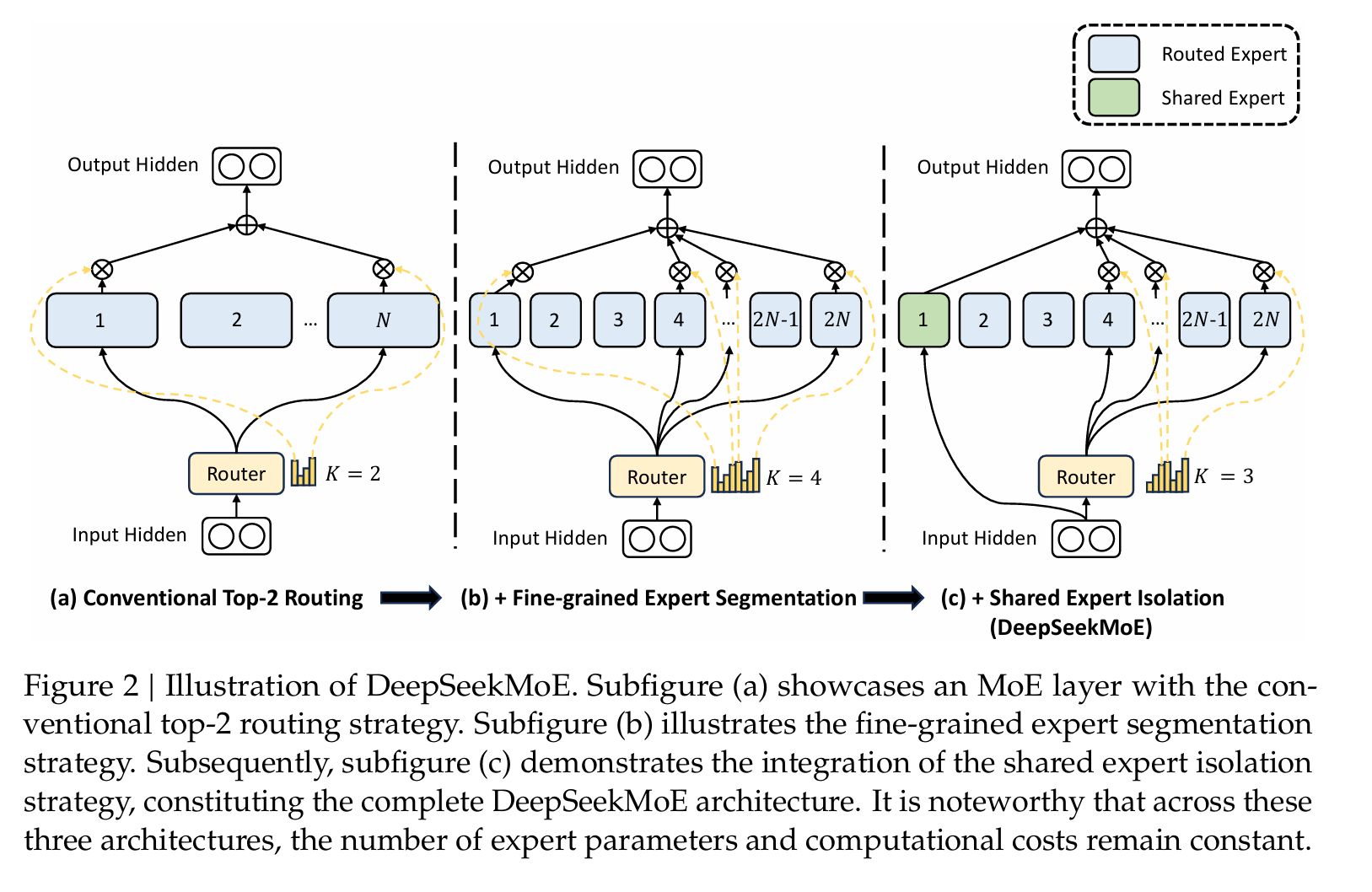
Fine-grained Expert Segmentation
如上图 B,DeepSeek-MoE 在减少了每个 expert FFN intermediate hidden dimension 的同时,增加激活的 expert 的数量,依次保证总体激活的 expert 的参数量一致。DeepSeekMoE 论文种认为,组合数量的提升,有利于 gate 更准确地选择 expert。
如当我们有 16 个 expert,然后选 top 2 进行推理时,activate expert 的组合数量有 种组合,但当将每个 expert 参数缩小 4 倍,expert 个数增加为 64 时,选取 top 8 进行推理时, activate expert 的组合书来给你就有 种。
Shared Expert Isolation
如上图 C,设立一部分 Shared Expert,每次推理的时候都会激活。
Qwen1.5-MoE
- 架构重点: 类似于 DeepSeek-MoE,Qwen1.5-MoE 也尝试了 Finegrained experts,整个模型总共设计了 64 个 expert;而后在 routing 机制种也尝试了 Shared Expert Isolation :采用了 4 个总是被激活的共享 expert 和每次只激活其中 4 个的 60 个 routing expert。
- 训练: 官方博客种表示:从零开始训练 MoE 模型可能效率低下,且难以提升至预期的最优性能水平。因此,Qwen1.5-MoE 首先利用已有的 Qwen-1.8B,将其改造为 Q wen1.5-MoE-A2.7B。此外,在初始化阶段引入随机性可以显著加快收敛速度,并在整个预训练过程中带来更好的整体性能表现。
- 模型效果: 模型在推理时,总的激活参数为 2.7B。但实现的效果也不错:
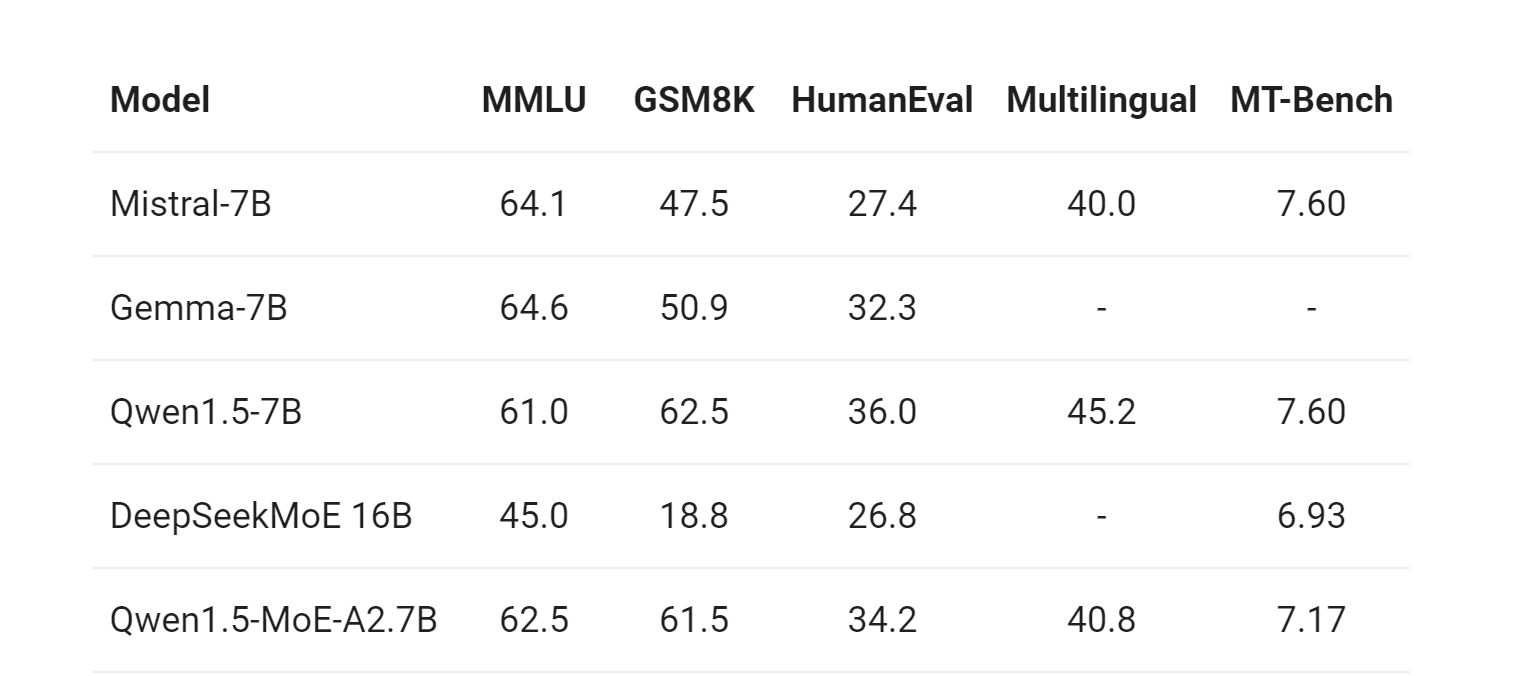
官方博客中发布了采用 vllm 部署时候的性能(单个 NVIDIA A100-80G GPU 部署 Qwen1.5-7B 和 Qwen1.5-MoE-A2.7B):

看来 MoE 架构在不牺牲生成质量的情况下,的确可以极大提高吞吐量,降低大模型生成成本。
DeepSeek-V2
github, 论文链接,权重下载,huggingface 模型代码
DeepSeek-V2 文中推出了 DeepSeek-V2-Lite 与 DeepSeek-V2 一小一大 2 个版本。
模型大小: DeepSeek-V2 整个模型有 236B 参数,其中推理激活参数为 21B。具体的架构参数可以查看:huggingface DeepSeek V2 config
模型效果:
推理速度:
DeepSeek V2 首先对模型进行了 KV Cache 量化,将参数转换为了 FP8。在单机 8 卡 H800 的节点上部署 DeepSeek-V2,可以达到约 50K tokens/秒 的吞吐量
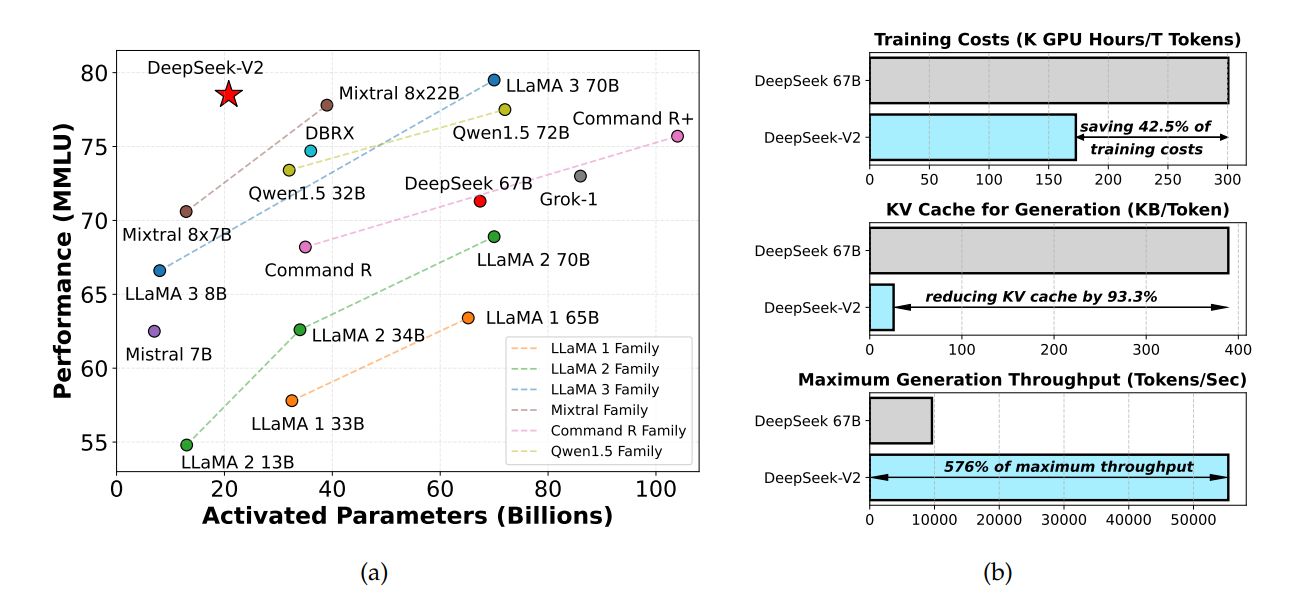
推理效果,中文水平更强一些,英文水平于 Mixtral 8*22B 有的一比:
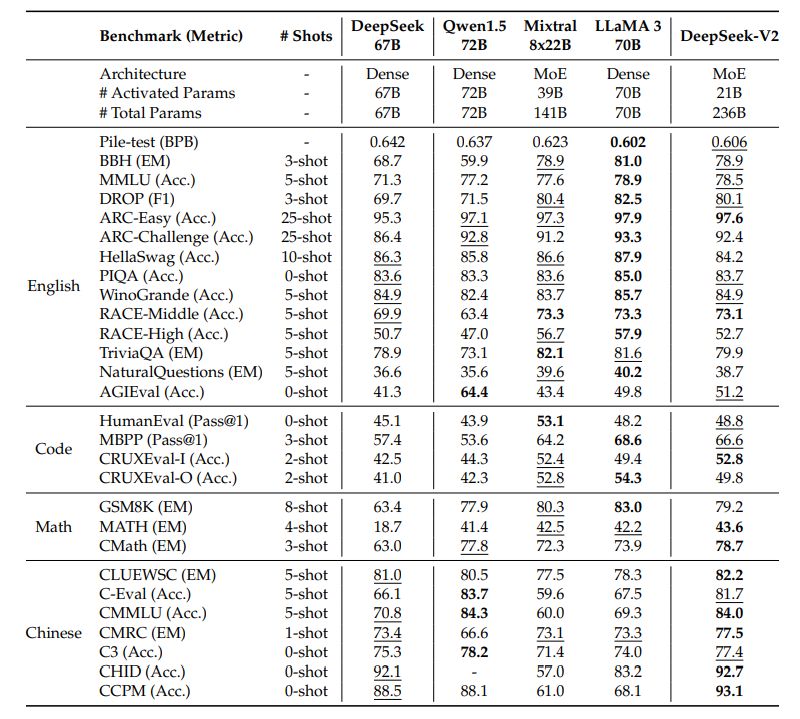
- 模型架构重点 :其中,架构采用了 MLA 取代 MHA,同时 MOE 架构采用了 DeepSeekMoE 的 fine-grained expert segmentation 和 shared experts isolation。整体的 DeepSeek Layer 架构如下:

- DeepSeekMoE
如上图展示的,DeepSeek-V2 同样采用了 DeepSeekMoE 的策略,其中有 2 个 shared experts , 160 个 routed experts(每次只激活 6 个)
- Multi-Head Latent Attention
DeepSeek-V2 中着重讲了这一部分的优化。
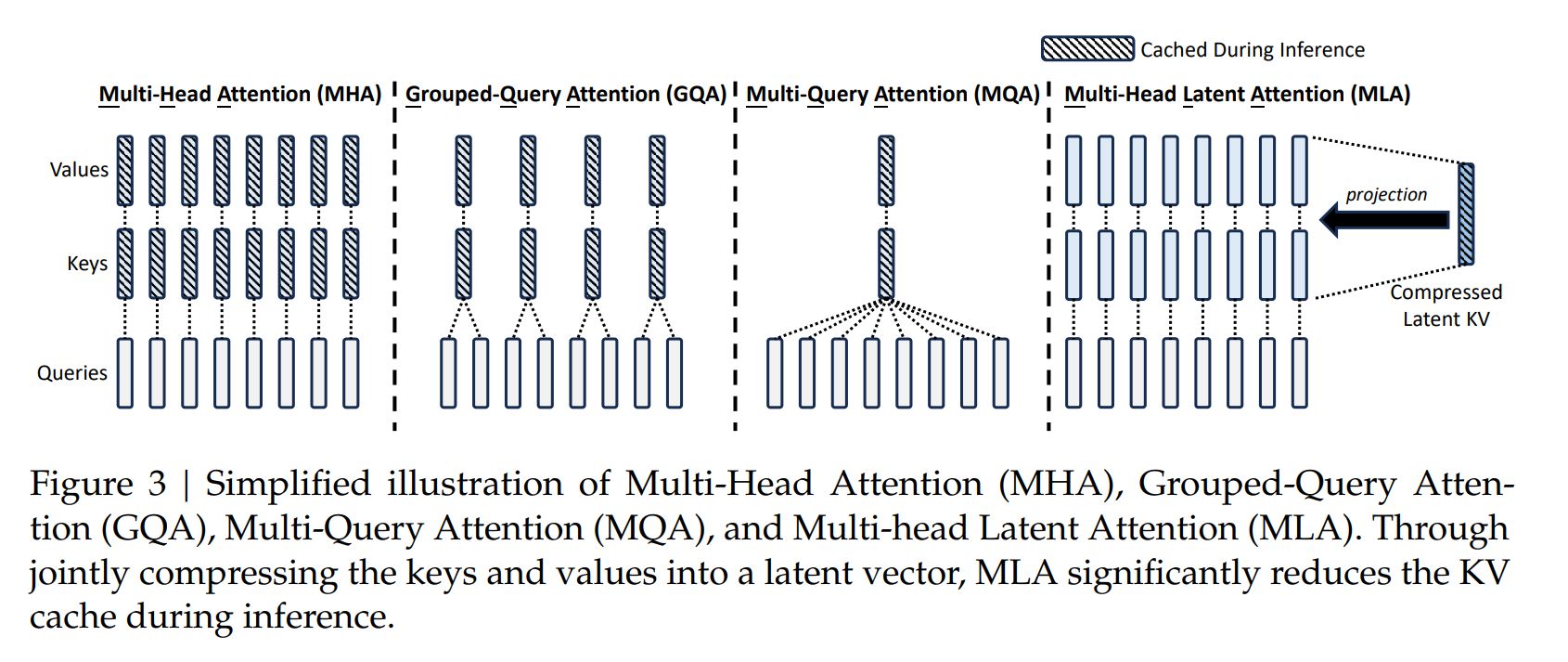
Low-Rank Key-Value Joint Compression
为了减少 KV cache,MLA 提出将 k, v 的计算方式变为:
其中,
q 的计算方法变为:
其中,
因此,k,v 均从 进一步计算得来。在推理时候,传统 MHA 需要 cache ,但通过以上变化后,只需要 cache 即可。这样, 点积就变成了。
推理过程中,可以合并 ,以此达到减少 cache 同时,不会增加太多的计算量。
Decoupled Rotary Position Embedding
以上方案的一个问题是,不兼容 RoPE。由于 RoPE 的存在,
不再是单纯的 ,而是需要内积上相对位置矩阵 ,因此就无法简单得合并 。
MLA 采用了以下 decoupled RoPE 方案:
大概思路是,在原先的 qk 中,增加几个维度,用来注入 RoPE 位置信息,比较值得注意的是,k 新增加的维度 是所有 head 共享的。其中,, , 因此,q,k 的维度增加到了 。
更深入的 MLA 解读,可以参考:缓存与效果的极限拉扯:从 MHA、MQA、GQA 到 MLA 或 deepseek v2 原论文。
文中给出了 MLA 与 MHA, GQA 的效果对比:
MLA 的 KV 的 cache 数量比 MHA, GQA 少了不少。
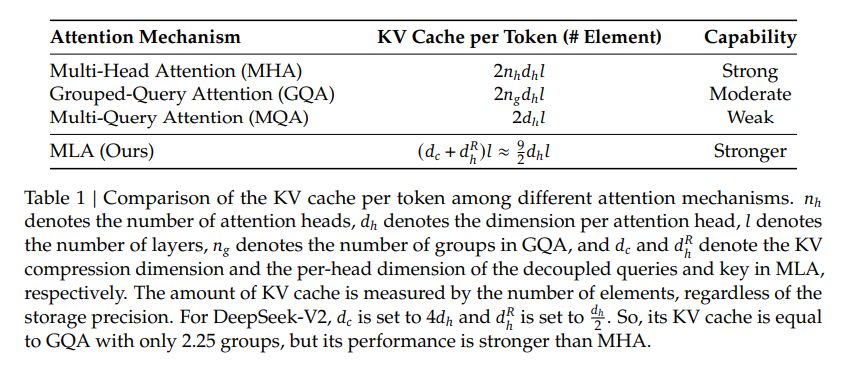
MLA KV cache 比 MHA 小的同时,效果也不会太差。
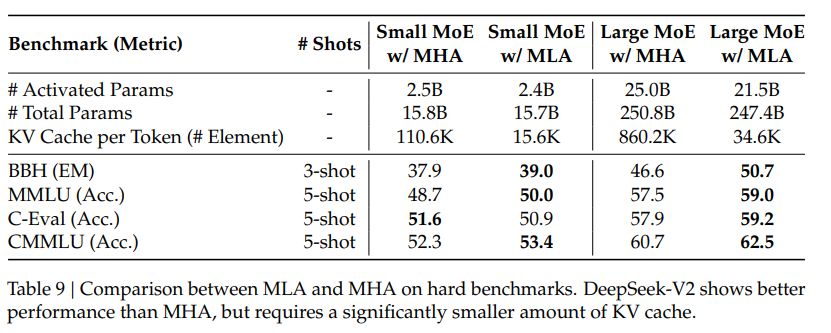
- 预训练: 相比于 DeepSeek 67B,DeepSeek-V2 训练集中有更多的中文数据,同时 DeepSeek V2 对数据过滤算法进行了改进,包括筛除有争议的内容等;DeepSeek V2 使用于 DeepSeek 67B 同样的 tokenizer,vocab size 为 100k,预训练语料约有 8.1T tokens,其中中文比英文多了 12%。整个预训练花费了 172.8K GPU hours 的算力。
- 超长上下文: 在适配了 Yarn 之后,额外在 32k 的数据集上训练了 1000 steps,batch size 为 576。文中表示,尽管是在 32K 数据集上训练,但在 128K 的大海捞针测试中,模型表现也不错:

- SFT :在包含了 1.5M 组训练实例的数据集上,微调了 2 个 epoch。
- RLHF: 采用了 GRPO 来节省 RL 训练的成本,主要是将 PPO 过程中的 advantage 替换成了 ,因此在 RLHF 过程中就不需要 Value model 了。具体算法如下:
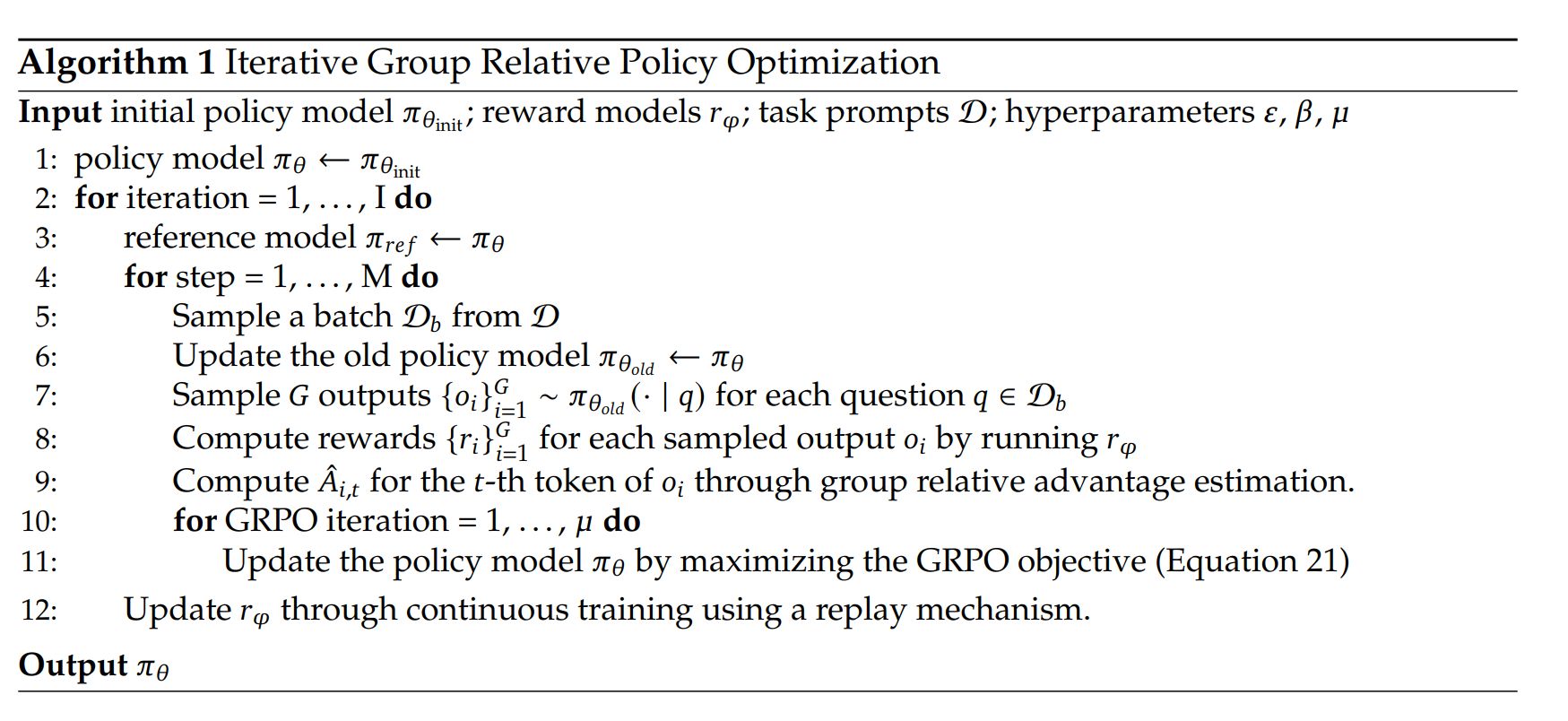
在 RLHF 训练过程中,采取了 2 阶段训练。首先进行了 reasoning alignment,而后进行 human preference alignment。
更多训练细节欢迎参考 DeepSeek-V2 论文
Mixtral 8*22B
- 架构:架构与 mixtral 8*7B 架构一样,在 huggingface 中使用的都是
MixtralForCausalLM,但 22B 的各方面参数大一点,比较特别的是 context window 从 32k 升级到了 65k,vocab_size也更大一些。 - 支持 function calling,不过好像没有透露具体的 function calling 训练细节。
- 数学和 coding 能力明显超越 llama2 70B
- 似乎对中文的支持不是很好。
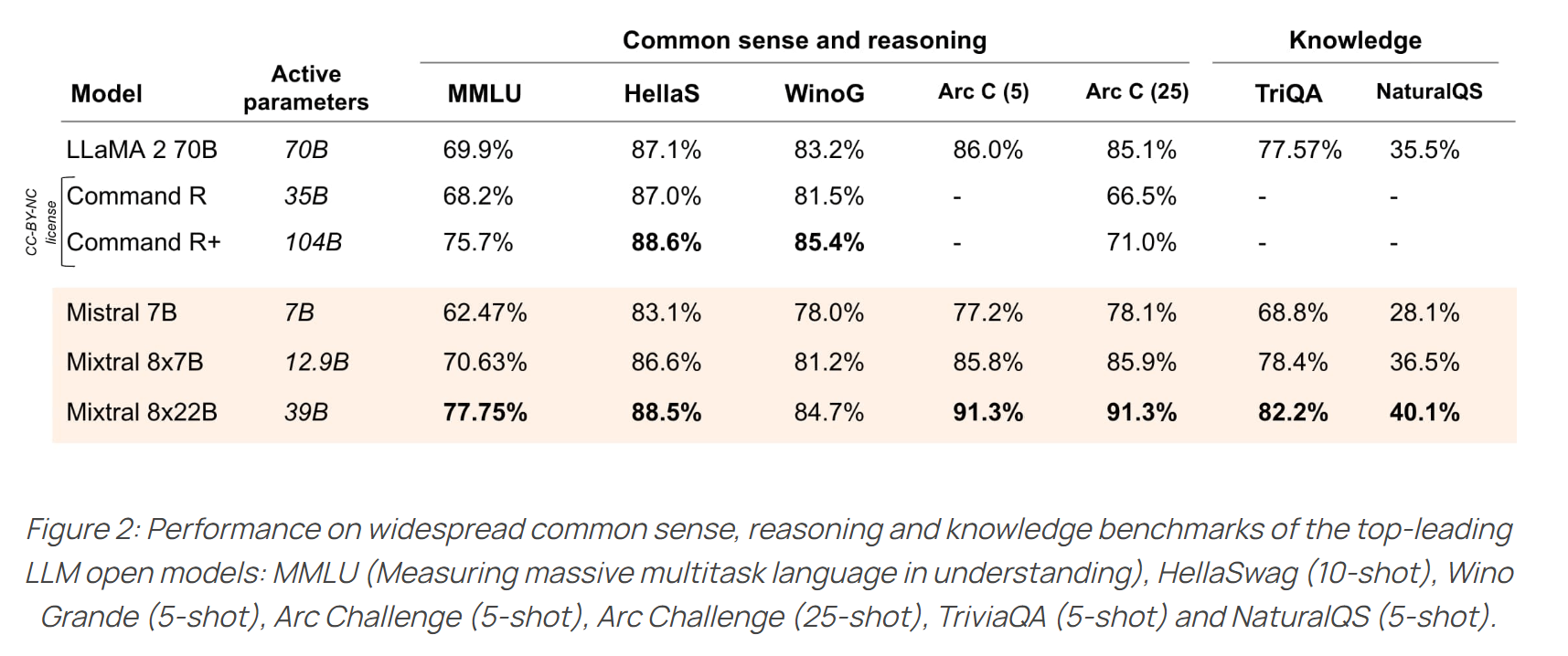
Mistral 团队开源的模型,都比较注重 coding 和 math 的能力,Mixtral 系列的模型在这方便表现也是比较好:
